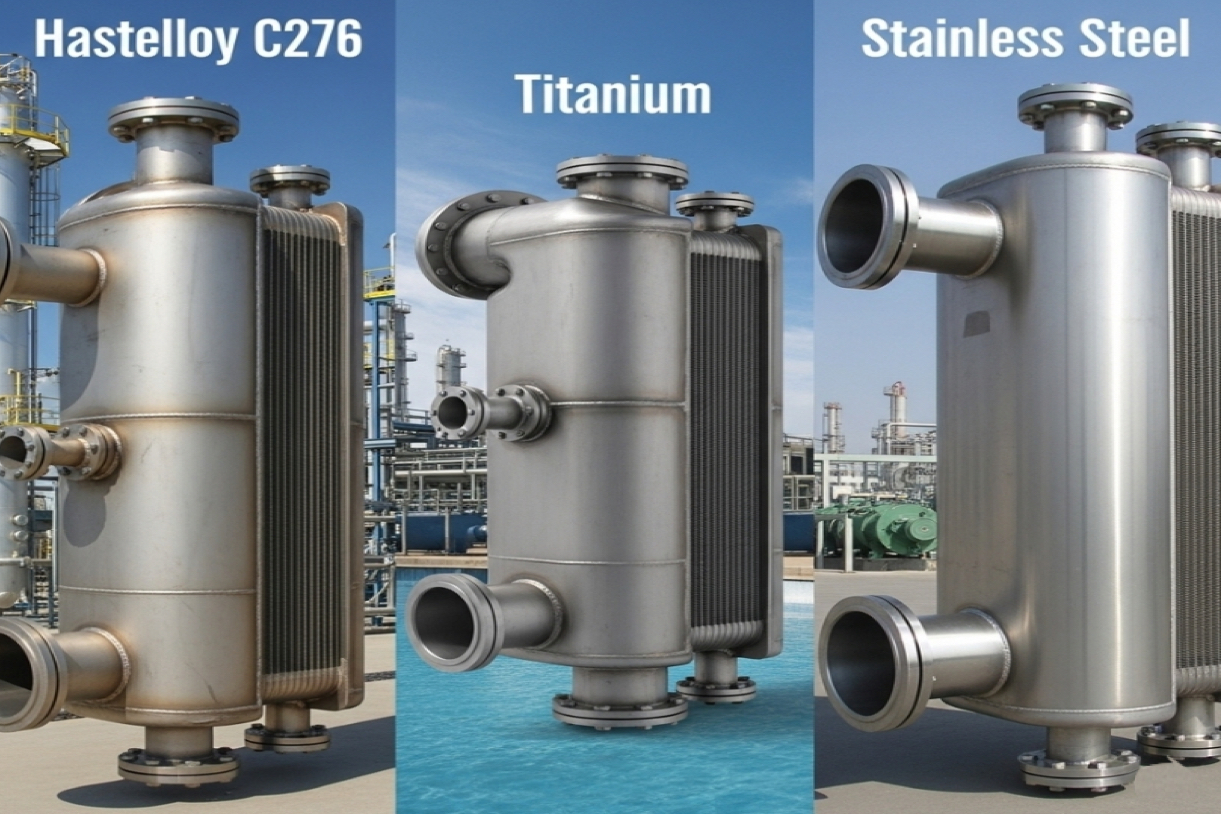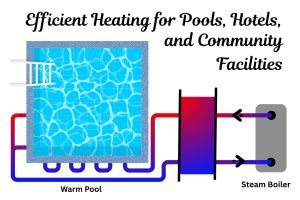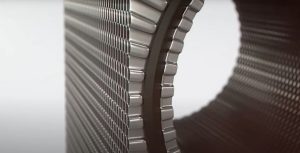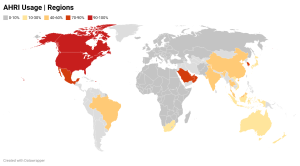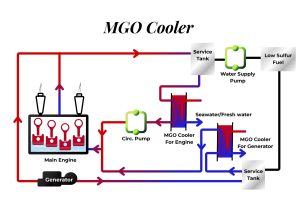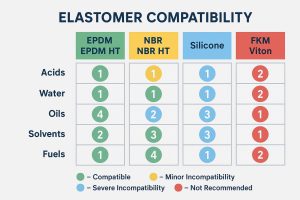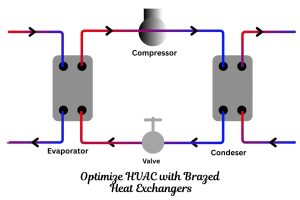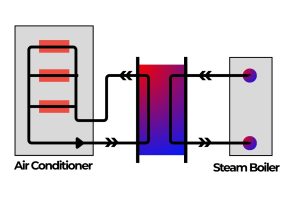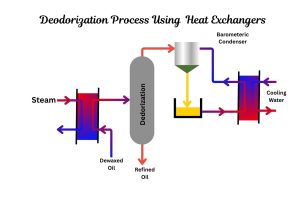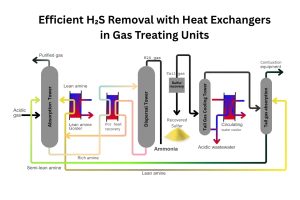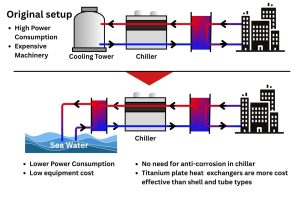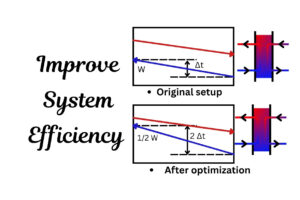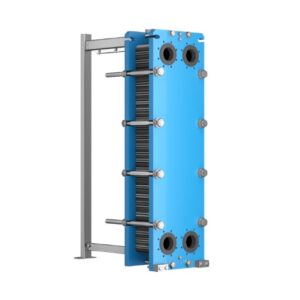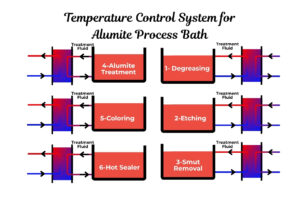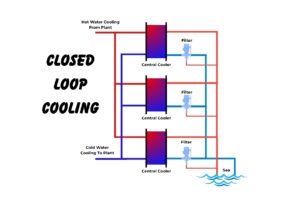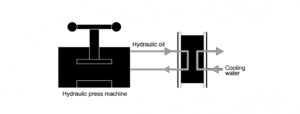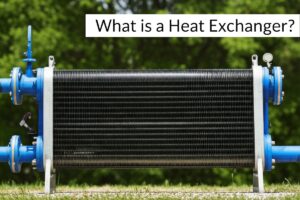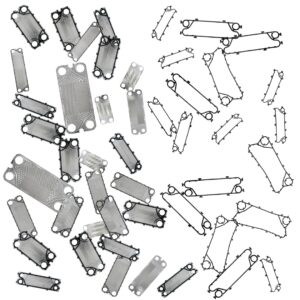Beyond Stainless: Why Hastelloy C276 and Titanium are Game-Changers for Heat Exchangers
For decades, stainless steel has been the workhorse of the heat exchanger world, and for good reason – it’s reliable, cost-effective, and widely understood. But in today’s increasingly demanding industrial landscape, where processes push the boundaries of temperature, pressure, and corrosive environments, stainless steel sometimes reaches its limits. This is where specialized alloys like Hastelloy C276 and Titanium step onto the stage, offering unparalleled performance for critical applications.
This article delves into the fascinating history of heat exchangers, explores the various types available, and highlights why Hastelloy C276 and Titanium are becoming indispensable in scenarios where traditional materials fall short. We’ll also cover common mistakes to avoid when selecting materials, discuss diverse applications, and touch upon material sourcing and typical operational challenges.
How Did We Get Here? A Brief History of Heat Exchangers
The concept of heat exchange is as old as civilization itself, with early humans using basic methods to warm their dwellings or cool their food. However, the sophisticated devices we recognize today as heat exchangers began to take shape with the Industrial Revolution. Early designs were rudimentary, often simple pipe-in-pipe configurations, primarily used for steam heating or water cooling.
As industrial processes grew in complexity and scale, so too did the need for more efficient and robust heat transfer solutions. The late 19th and early 20th centuries saw the advent of shell-and-tube heat exchangers, which significantly increased heat transfer surface area and allowed for higher pressures and temperatures. These became the industry standard, and variations of this design are still widely used today due to their ruggedness and reliability.
The mid-20th century brought another leap forward with the introduction of plate heat exchangers. These compact and highly efficient units revolutionized heat transfer by offering a much larger surface area-to-volume ratio, leading to improved thermal efficiency and smaller footprints. The evolution continued with specialized designs like spiral plate heat exchangers for challenging fluids and welded plate exchangers for aggressive media and extreme conditions.
Today, the quest for even greater efficiency, smaller footprints, and the ability to handle increasingly harsh process fluids has led to the exploration and widespread adoption of advanced materials like Hastelloy C276 and Titanium, pushing the boundaries of what heat exchangers can achieve.
What Kinds of Heat Exchangers Are There, Anyway?
The world of heat exchangers is vast and varied, with each type designed to excel in specific scenarios. Understanding the fundamental differences is key to making informed decisions for your operations.
Are Gasketed Plate Heat Exchangers the Most Versatile?
Gasketed Plate Heat Exchangers (GPHEs) are renowned for their flexibility and ease of maintenance. Imagine a stack of specially designed plates, each with a gasket that creates a tight seal and directs the flow of fluids. These units can be easily opened for cleaning, inspection, and replacement of plates or gaskets. This modularity also means you can add or remove plates to adjust the heat transfer capacity as your needs evolve. They are ideal for industries where uptime is critical but fouling is a risk, such as chemical processing, marine applications, and HVAC systems.
When Do Welded Block and Shell & Plate Heat Exchangers Shine?
When processes involve aggressive fluids, extremely high temperatures, or demanding pressures, welded designs step in where gaskets might falter.
- Welded Block Heat Exchangers are fully welded, compact units that eliminate the need for gaskets, making them perfect for highly corrosive media and extreme environments like petrochemicals and offshore platforms. Their robust construction offers exceptional durability and requires minimal maintenance.
- Shell and Plate Heat Exchangers represent a clever hybrid, blending the strengths of traditional shell-and-tube designs with the efficiency of plate technology. They deliver high pressure and thermal efficiency within a smaller footprint, making them suitable when compactness and reliability are non-negotiable.
Why are Shell & Tube Heat Exchangers Still So Popular?
Despite the rise of more compact designs, shell-and-tube heat exchangers remain a staple, particularly for demanding applications involving high pressures and temperatures. Their robust, simple construction and long history of reliability make them a go-to in power plants, refineries, and general chemical processing where ruggedness is paramount. They are less susceptible to fouling compared to plate heat exchangers and generally have a longer service life.
What About Specialized Designs Like Spiral Heat Exchangers?
Beyond these common types, specialized designs cater to unique challenges:
- Spiral Heat Exchangers are a definitive solution for extremely challenging fluids like sludges, slurries, wastewater, and high-viscosity media that contain fibers and solids. Their coiled metal sheets form single, long, curved channels that create a self-cleaning effect, significantly reducing the risk of clogging and enabling very high thermal performance. They are excellent for heat recovery and applications demanding minimal maintenance downtime.
- Brazed Plate Heat Exchangers are permanently joined by brazing, offering a very compact and high-performance solution without gaskets. They are often found in refrigeration systems, heat pumps, and industrial water heaters due to their excellent heat and pressure resistance in a small footprint.
Why Consider Hastelloy C276 and Titanium Over Stainless Steel?
While stainless steel (like AISI 304 and 316) offers a good balance of corrosion resistance and cost for many applications, there are critical scenarios where its limitations become apparent. This is where advanced alloys like Hastelloy C276 and Titanium truly shine.
What Makes Hastelloy C276 So Special?
Hastelloy C276 is a nickel-molybdenum-chromium superalloy renowned for its exceptional corrosion resistance in a wide range of severe environments. Unlike stainless steel, which can be susceptible to pitting and crevice corrosion in chloride-rich solutions, or stress corrosion cracking in certain high-temperature chloride or acidic conditions, Hastelloy C276 offers superior performance. It stands up to:
- Highly Corrosive Acids: It excels in handling strong oxidizing and reducing acids, including sulfuric acid, hydrochloric acid, and nitric acid, even at elevated temperatures.
- Chlorine and Chloride Compounds: Its high nickel and molybdenum content provides outstanding resistance to pitting, crevice corrosion, and stress corrosion cracking in chloride-bearing media, making it invaluable in chemical processing plants dealing with brines or chlorinated solutions.
- Wet Chlorine Gas: It’s one of the few materials that can withstand wet chlorine gas, a highly aggressive oxidant.
This superior corrosion resistance translates directly into extended operational life and enhanced safety, mitigating the risks of costly leaks, equipment damage, and environmental hazards often associated with material failure in harsh chemical processes.
Where Does Titanium Outperform Stainless Steel?
Titanium (Grade 1 or TP270, for instance) is another exceptional material for heat exchangers, particularly celebrated for its inertness and outstanding resistance to specific corrosive environments where stainless steel would rapidly degrade.
- Seawater and Chlorinated Water: Titanium is virtually immune to corrosion in seawater, brackish water, and chlorinated water, even at high velocities and temperatures. This makes it the material of choice for marine applications, district cooling systems using seawater, and processes where cooling water is drawn from saline sources. Stainless steel, conversely, is prone to pitting and crevice corrosion in these environments.
- Chlorides and Hypochlorites: It offers excellent resistance to strong chloride solutions, hypochlorites, and other oxidizing chloride compounds.
- Oxidizing Media: Titanium forms a stable, passive oxide layer that provides exceptional resistance to oxidizing environments.
- Erosion-Corrosion: While stainless steel can suffer from erosion-corrosion in high-velocity slurry applications, titanium often performs better, though careful design is still necessary.
Its lightweight nature is an added bonus, especially in applications where weight reduction is crucial, such as marine and aerospace industries.
What Are the Key Advantages of These Advanced Materials?
Beyond their specific corrosion resistance profiles, Hastelloy C276 and Titanium offer several overarching benefits compared to stainless steel:
- Extended Lifespan: While the upfront cost may be higher, their superior resistance to aggressive media means significantly longer operational lifespans, reducing the frequency of replacements and associated downtime and labor costs.
- Enhanced Safety: In processes involving hazardous or flammable fluids, material integrity is paramount. These alloys minimize the risk of leaks, protecting personnel, the environment, and preventing catastrophic incidents.
- Reduced Fouling (in some cases): In environments where corrosion leads to surface roughening and subsequent fouling, the superior corrosion resistance of Hastelloy and Titanium can contribute to smoother surfaces and potentially reduced fouling rates, extending cleaning intervals.
- Higher Performance in Extreme Conditions: They enable processes to operate at higher temperatures and pressures than would be feasible with stainless steel, pushing the boundaries of efficiency and throughput.
Common Pitfalls: How to Avoid Material Selection Mistakes
Choosing the right material for a heat exchanger is a critical decision, and missteps can lead to costly operational issues, premature equipment failure, and safety hazards. Avoiding these common mistakes is paramount:
Why is Material Compatibility with Process Media So Important?
One of the most frequent errors is neglecting a thorough evaluation of material compatibility with all process fluids, including cleaning agents. A material that performs well with the primary fluid might react adversely with a trace contaminant, a cleaning solution, or even the utility fluid on the other side of the exchanger. For instance, EPDM gaskets, while excellent for many high-temperature applications, can swell or dissolve if exposed to certain aggressive chemicals or oils. Similarly, Hastelloy C276, while broadly resistant, might not be the optimal choice for highly oxidizing, hot nitric acid, and titanium can be susceptible to corrosion in highly reducing acids or dry chlorine gas. Always provide a comprehensive media and water quality report to your supplier for the best recommendation.
How Can Neglecting Operating Conditions Lead to Problems?
It’s easy to focus solely on the primary operating temperature and pressure. However, heat exchangers often experience transient conditions, such as start-up, shutdown, and unexpected pressure surges or temperature spikes. These transient events can cause fatigue cracking in plates or gaskets if the material is not designed to withstand such fluctuations over time. For example, rapid temperature changes can lead to thermal shock, and pressure pulsations can cause mechanical fatigue, especially in thinner plates. Always consider the full spectrum of operating conditions, including minimum and maximum temperatures and pressures, and potential pressure spikes or surges.
Is Over-tightening a Real Problem for Heat Exchangers?
Yes, absolutely. Over-tightening a gasketed plate heat exchanger can severely deform the plates and gaskets, leading to immediate leaks or significantly reducing their lifespan. Gaskets are designed to be compressed to a specific “A-dimension” to ensure proper sealing. Exceeding this can lead to premature hardening, cracking, or even pushing the gasket out of its groove. Always follow the manufacturer’s specified tightening procedures and dimensions precisely.
What Happens if Plates Are Assembled Incorrectly?
Plate heat exchangers require precise assembly. If plates are hung in the wrong order or orientation, or if the gasket is twisted or not seated correctly in its groove, it can lead to uneven flow distribution, reduced thermal performance, and internal or external leakage. This can result in significant inefficiencies and even cross-contamination between fluids. Always refer to the plate hanging list and instruction manual, and consider marking the plates during disassembly to ensure correct reassembly.
Why are Regular Inspections and Maintenance Crucial?
Even the best materials and designs require ongoing attention. Neglecting routine maintenance, such as cleaning and inspecting for wear, corrosion, or fouling, can lead to a gradual decline in performance, increased energy consumption, and eventually unexpected breakdowns. Fouling, in particular, can accumulate on heat transfer surfaces, reducing efficiency and increasing pressure drop. Regular cleaning, whether chemical (CIP) or mechanical, is essential.
Where Do Heat Exchangers Work Their Magic? Diverse Applications
Heat exchangers are the unsung heroes behind countless industrial processes, enabling everything from keeping our food fresh to generating electricity. Here’s a glimpse into their widespread applications:
How Do Heat Exchangers Keep Food and Beverages Safe?
The food and beverage industry demands rigorous hygiene and precise temperature control. Heat exchangers are critical for pasteurization, sterilization, and chilling processes, ensuring product safety, quality, and extended shelf life. For instance, in dairy production, UHT (Ultra High Temperature) systems, often utilizing infusion technology, rapidly heat milk and cream to eliminate bacterial spores while preserving flavor and nutritional value, enabling products to be stored for months without refrigeration. Brazed plate heat exchangers are common in industrial and home water heaters, and plate heat exchangers are used for pasteurization and heat recovery in food and dairy applications. Specialized designs like free-flow plate heat exchangers handle viscous fluids with fibers or particles, like juices with pulp or molasses, preventing clogging and ensuring gentle product treatment.
What Role Do Heat Exchangers Play in Chemical Processing?
The chemical industry is a demanding environment for heat exchangers, requiring materials and designs that can withstand corrosive fluids, aggressive reactions, and high pressures. They are used for fluid-to-fluid heat transfer, gas-to-gas processes, and handling highly corrosive media. For example, they stabilize reaction temperatures, capture and reuse heat from exhaust streams, and are crucial in acid production or polymer manufacturing. Materials like titanium, Hastelloy, or specialized stainless steels are often employed to resist corrosion and fouling.
How Do Heat Exchangers Power Our World?
In power generation, from coal and gas to nuclear plants, heat exchangers are at the heart of thermal management. They maximize energy conversion and minimize downtime. In steam power plants, they manage the steam cycle, condensing exhaust steam for reuse. In gas-fired plants, they recover exhaust heat to improve fuel efficiency. For nuclear power, they are mission-critical, isolating radioactive fluids while maintaining peak thermal transfer. These applications demand materials resistant to scaling, corrosion, and thermal fatigue under high pressures and fluctuating loads.
Where Else Do Heat Exchangers Make a Difference?
- HVAC and District Energy: Heat exchangers are integral to modern heating, ventilation, and air conditioning systems, transferring thermal energy efficiently within buildings and across district heating/cooling networks.
- Marine and Offshore: Given their exposure to corrosive saltwater, heat exchangers in marine and offshore applications often utilize titanium for central cooling and lubrication oil cooling, ensuring long-term reliability.
- Industrial Manufacturing: Across diverse manufacturing sectors like heavy machinery, consumer goods, textiles, and automotive, heat exchangers stabilize systems, protect machinery (e.g., cooling hydraulic oil), and recover waste heat.
- Refrigeration: From commercial grocery stores to large-scale industrial cold storage, refrigerant heat exchangers absorb heat from one medium and release it elsewhere, crucial for keeping food safe and maintaining climate control.
Sourcing Smart: Materials and Spare Parts
The performance and longevity of a heat exchanger are intrinsically linked to the quality of its materials and the availability of reliable spare parts. Sourcing smart means not just looking at the initial cost, but the long-term value, accessibility, and compatibility of components.
What Materials Should You Prioritize for Heat Exchangers?
The selection of heat exchanger materials is paramount and depends heavily on the specific application, fluid properties, and operating conditions.
- Stainless Steel (AISI 304, 316, 316L): These are workhorse materials for many applications due to their good corrosion resistance, mechanical properties, and cost-effectiveness. AISI 304 and 316 are common for standard duties, while 316L offers improved corrosion resistance in some environments due to lower carbon content.
- Titanium (Grade 1, TP270): Essential for highly corrosive chloride-containing media like seawater, brackish water, and various chemical processes where stainless steel would fail.
- High Nickel Alloys (Hastelloy C276, C22, B, G): These alloys, especially Hastelloy C276, are crucial for extremely aggressive chemical environments, including strong acids and highly corrosive chloride solutions, where even titanium might be unsuitable.
- Other Alloys: Depending on the specific requirements, other materials like SMO254, copper alloys, or even exotic materials are available.
Gasket materials are equally important and must be compatible with the process fluids and operating temperatures. Common options include NBR, EPDM, and Viton, with specialized materials like PTFE cushion gaskets (TCG) for highly corrosive fluids or higher temperatures.
Why is a Robust Spare Parts Supply Chain Critical?
Having immediate access to quality spare parts is crucial for minimizing downtime and ensuring continuous operation.
- OEM-Equivalent Quality: When replacing parts like plates and gaskets, it’s vital to use components that are equivalent to original equipment manufacturer (OEM) standards. This ensures compatibility, performance, and extends the lifespan of the heat exchanger. Heating Formula, for example, supplies heat exchangers and spare parts equivalent to leading brands like Alfa Laval, Sondex, APV SPX, Funke, Schmidt, Vicarb, Gea, and Tranter. This ensures that you can source high-quality replacement parts without being tied to a single brand’s supply chain.
- Global Network and Stockpiles: Delays in obtaining critical parts can halt an entire production line. Partnering with suppliers who maintain strategic stockpiles of essential raw materials and finished components across a global network can drastically reduce lead times and shipping costs, especially for international operations.
- Standardized Components: Suppliers who standardize heat exchanger components across all regions simplify sourcing and ensure consistent quality, reducing variability and potential performance issues.
- Expert Support: A reliable supplier offers more than just parts; they provide expert technical support, helping with material selection, troubleshooting, and maintenance guidance.
By prioritizing a robust spare parts strategy and partnering with knowledgeable suppliers, you can significantly mitigate the risks associated with heat exchanger maintenance and ensure long-term operational efficiency.
Common Problems: Keeping Your Heat Exchanger Running Smoothly
Even with the right material and design, heat exchangers can encounter issues that impact their performance and lifespan. Recognizing these common problems and their solutions is key to maintaining efficient operations.
What Causes Reduced Heat Transfer Performance?
A decline in heat transfer efficiency is a common symptom of several underlying issues:
- Fouling: This is the most frequent culprit. Over time, undesirable substances (like scale, sludge, biological growth, or process residue) accumulate on the heat transfer surfaces, creating an insulating layer that reduces heat transfer. This can occur in both process and utility media channels.
- Solution: Regular cleaning is essential. This can be done mechanically (e.g., disassembling and brushing/water jetting the plates ) or chemically with Cleaning-In-Place (CIP) systems, where specialized cleaning liquids are circulated through the unit without disassembly. Optimized cleaning procedures and the use of appropriate chemical cleaners (like Plate-Clean for specific scales) can significantly extend cleaning intervals.
- Incorrect Flow Rates/Distribution: Operating conditions that deviate from the design parameters can lead to uneven flow distribution across plates or channels, creating “dead zones” where fluid stagnates and heat transfer is inefficient.
- Solution: Verify actual flow rates against design parameters. Redesigning to achieve more even flow distribution, adding parallel units, or adjusting port sizes might be necessary.
- Damaged Plates or Gaskets: Corrosion, erosion, or fatigue cracking in plates, or hardened, cracked, or swollen gaskets, will compromise heat transfer integrity.
- Solution: Replace damaged components immediately. Ensure correct material selection for the operating environment.
Why Does Pressure Drop Increase or Flow Rate Decrease?
An unexpected rise in pressure drop or a reduction in flow rate signals a blockage or restriction within the heat exchanger:
- Clogging: Similar to fouling, large particulates, fibers, or debris in the fluid can physically block flow channels or port holes, especially in free-flow or wide-gap designs. In sea water applications, marine organisms like algae and shellfish can cause significant clogging.
- Solution: Implement inline filters or strainers upstream of the heat exchanger to remove larger particulates. Backflushing the system can also dislodge accumulated debris. If severe, disassembly and manual cleaning may be required.
- Insufficient Tightening of Plate Pack: In gasketed units, if the plate pack is not tightened to the correct dimension, it can lead to leakage or improper plate contact, affecting flow and pressure drop.
- Solution: Re-tighten the plate pack according to the manufacturer’s specified A-dimension.
- Gasket Swelling/Deformation: If gaskets absorb process media or cleaning liquid they are incompatible with, they can swell and deform, narrowing the plate gap and restricting flow.
- Solution: Replace with gaskets made from a more compatible elastomer material.
What Causes Fluid Leakage (External or Internal)?
Leaks are a critical issue that can lead to product loss, contamination, safety hazards, and environmental pollution:
- Aged or Deteriorated Gaskets: Over time, gaskets lose elasticity, harden, crack, or swell due to age, high temperature exposure, or incompatibility with process media, leading to external leakage from between the plates. UV exposure can also lead to brittle gaskets.
- Solution: Replace aged or damaged gaskets at recommended intervals. Ensure gasket compatibility with the media.
- Improper Gasket Installation: Gaskets not placed centrally in the groove, twisted, or with broken glue bonds (for glued types) can lead to leaks.
- Solution: Re-gasket carefully, ensuring the gasket is correctly seated and the glue (if applicable) cures properly.
- Plate Corrosion/Cracking: Pitting corrosion, crevice corrosion, stress corrosion cracking, or fatigue cracking can lead to holes in the plates, resulting in internal leakage (mixing of hot and cold media) or external leakage.
- Solution: Identify and replace corroded or cracked plates. Consider upgrading plate material to a more corrosion-resistant alloy if the issue is recurring. Mitigate pressure spikes or surges that can cause fatigue.
- Hydraulic Hammering: Sudden pressure surges caused by rapid pump startup/shutdown or quick valve closure can create immense impact pressure, deforming plates or gasket grooves and leading to leaks.
- Solution: Implement proper start-up and shut-down procedures, including opening outlet valves before inlets and slowly opening valves to avoid sudden pressure changes. Install safety devices like vacuum breakers or relief valves to prevent deformation from pressure fluctuations or thermal expansion.
- Incorrect Plate Assembly: If plates are assembled in the wrong order or orientation, it can create internal bypasses or misaligned flow paths, leading to reduced thermal performance and potential leakage.
- Solution: Disassemble and reassemble according to the plate hanging list and instruction manual. Marking plates during disassembly can aid correct reassembly.
Regular monitoring of pressure drop and temperature differentials, coupled with scheduled maintenance and a reliable spare parts supply, can prevent many of these common heat exchanger problems.
Note on Heating Formula: Heating Formula is a trusted supplier of heat exchangers and spare parts, offering high-quality components equivalent to OEM specifications for leading brands like Alfa Laval, Sondex, APV SPX, Funke, Schmidt, Vicarb, Gea, and Tranter. Our commitment is to provide reliable, efficient, and cost-effective solutions to meet your heat transfer needs. Contact us today to learn more:
- Heat Exchanger Selection: https://heatingformula.com/en/gphe-selection/
- Spare Parts: https://heatingformula.com/en/gphe-spare-parts/
- Contact Us: https://heatingformula.com/en/contact/
Frequently Asked Questions (FAQ)
Q: What is the primary function of a heat exchanger?
A: The primary function of a heat exchanger is to transfer thermal energy between two or more fluids at different temperatures, either to heat one fluid or cool another, without necessarily mixing the fluids.
Q: How do heat exchangers improve energy efficiency?
A: Heat exchangers improve energy efficiency by recovering waste heat from one process stream and transferring it to another where it can be usefully used, thus reducing the need for external heating or cooling utilities.
Q: What are the main types of heat exchangers?
A: The main types include gasketed plate heat exchangers (GPHEs), welded block heat exchangers, shell and plate heat exchangers, shell and tube heat exchangers, spiral heat exchangers, and brazed plate heat exchangers.
Q: When should I consider using Hastelloy C276 for my heat exchanger?
A: Hastelloy C276 should be considered when dealing with highly corrosive acids, strong chlorine or chloride-containing media, or wet chlorine gas, as it offers exceptional resistance to pitting, crevice corrosion, and stress corrosion cracking in these aggressive environments.
Q: Why is Titanium a preferred material for marine heat exchangers?
A: Titanium is preferred for marine heat exchangers due to its virtual immunity to corrosion in seawater, brackish water, and chlorinated water, even at high velocities and temperatures, where other materials like stainless steel would be susceptible to pitting and crevice corrosion.
Q: What is fouling and how does it affect heat exchanger performance?
A: Fouling is the accumulation of unwanted substances (like scale, sludge, or biological growth) on the heat transfer surfaces, which creates an insulating layer that reduces heat transfer efficiency and can increase pressure drop, leading to decreased performance and increased energy consumption.
Q: What are some common maintenance practices for heat exchangers?
A: Common maintenance practices include regular cleaning (chemical or mechanical), monitoring pressure drop and temperature changes, checking for and addressing leaks immediately, and ensuring proper assembly and tightening of components.
Q: Can I use non-OEM spare parts for my heat exchanger?
A: While non-OEM parts might seem cheaper upfront, they can lead to hidden costs due to frequent breakdowns, subpar performance, and extended delays. It’s crucial to use OEM-quality replacement parts to ensure compatibility, maintain performance, and extend the equipment’s lifespan.
Q: What is the significance of proper heat exchanger sizing?
A: Proper sizing is critical for efficiency, longevity, and overall performance. An incorrectly sized unit can lead to inefficiency, higher energy consumption, operational shortcomings, and increased costs, while a well-sized unit offers a small footprint, cost savings, extended maintenance periods, and enhanced efficiency.
Q: What is “thermal hydraulics” in heat exchangers?
A: Thermal hydraulics refers to the combined thermal and hydraulic performance of a heat exchanger. Thermal performance focuses on heat transfer efficiency, while hydraulic performance ensures optimal fluid movement with minimum pressure drop. Balancing both is crucial for overall process efficiency.
